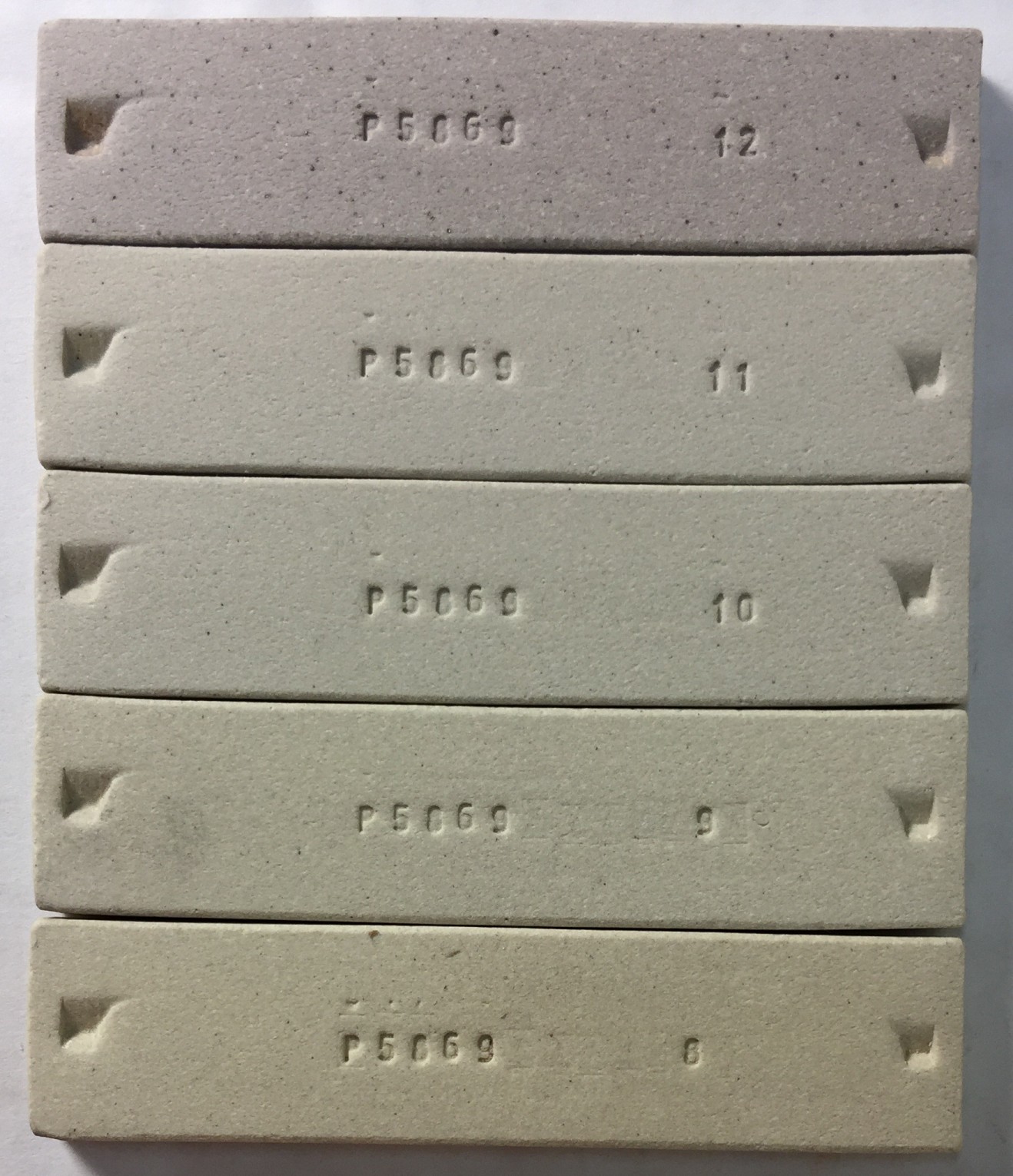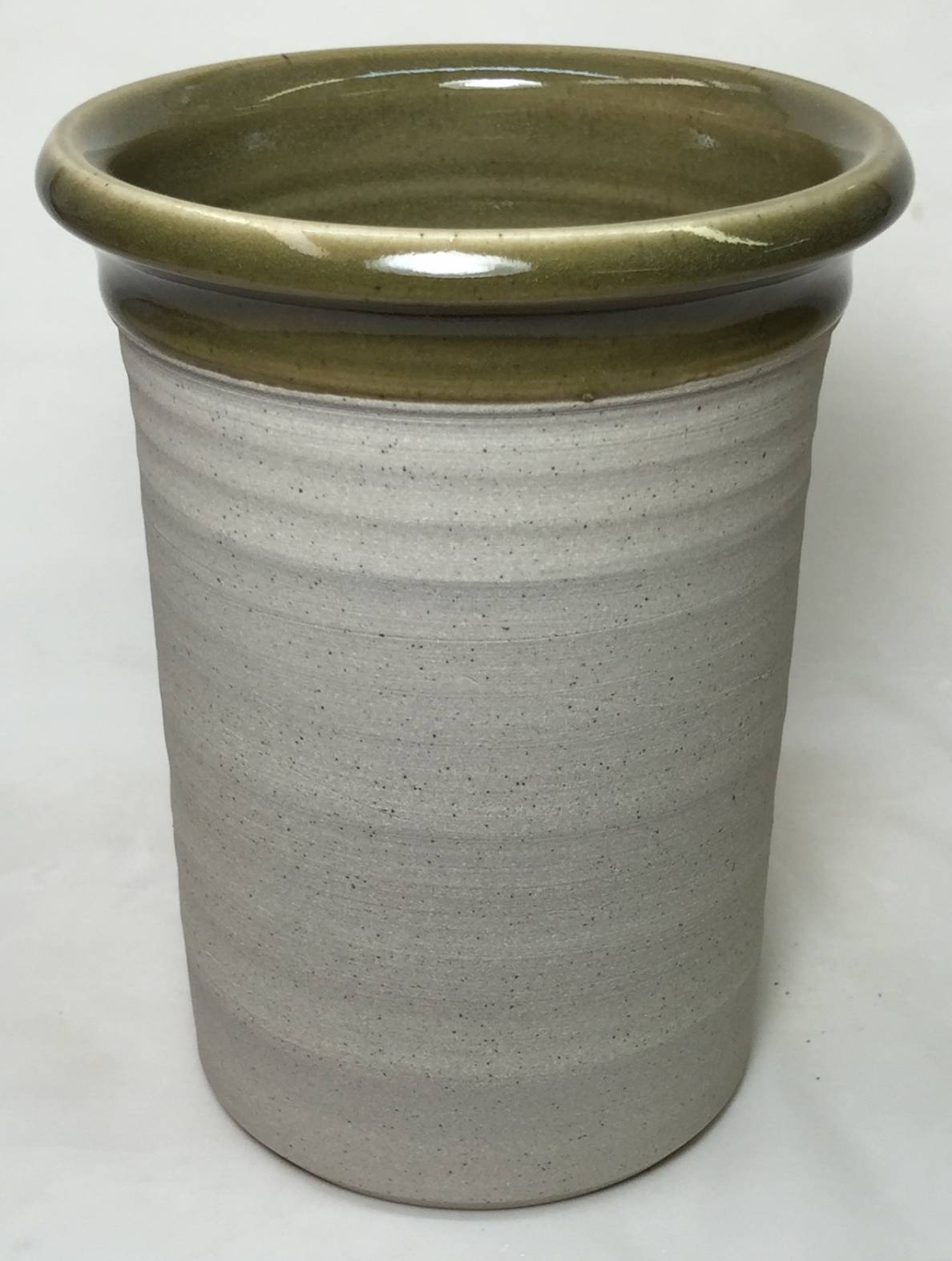H555
Description
High temperature, smooth, functional, medium plastic, vitreous, light grey-buff burning body made from a mix of refined and clean native clays for reduction and oxidation fired functional stoneware. H555 is a 50:50 blend of our native materials (like those used in H550) and of refined industrial minerals (like ball clay, kaolin, feldspar, silica). It thus features some of the robust drying and working properties of the former while also displaying the more refined and vitreous fired character of the latter.
Process Properties
H555 is one of Plainsman's most pleasant throwing bodies. Although smooth and fine, it is not as slick as bodies made entirely of refined materials. It dries relatively fast and has very high green strength.
H555 has a lower drying shrinkage and thus it dries with less cracking. However, since it is fine grained, extra care and attention in drying are rewarded when making larger pieces, especially flat plates and shallow bowls (i.e. use slip containing an aggregate like molochite, focus drying on evenness rather than speed, use as much pressure and lateral movement as possible when joining, make ware with an even cross section, etc.).
Firing
H555 fires to a pleasant light grey-buff in reduction and buff-white in oxidation. It is semi-vitreous (burns to about 1% porosity at cone 10). It burns significantly whiter than H550 (our buff burning native stoneware) and the speckle population and size is much lower. By cone 7 porosity is about 4% so we do not recommend this body for middle temperature functional ware.
H555's high fired strength and homogeneous surface makes it an excellent compromise for fine functional stoneware. But remember that while it is more resistant to warping than our porcelains it is more prone to deforming on overhung or extreme shapes than our native stonewares.
Glazing
H555 does not bleed iron or interfere with glaze melts and thus encourages clean results. However if you use earthtone glazes that are at their best on iron or speckled bodies, consider trying H550 or H443. If you use white or transparent glazes there will be some scattered small back speckles, especially if the glaze cover is thin.
H555 is easier to fit glazes to than our porcelains but can require a little more effort than our stoneware bodies.
Glaze Recipes
Commercial brush-on glazes: They may or may not fit our clays (check for glaze fit using a BWIW test or similar). For brightly colored glazes (especially with layering) do a leach test (e.g. GLLE test). Consider using a transparent or white liner glaze for food surfaces.
Mixing your own glazes is practical (with our clear guidelines even beginners can make dipping glazes that go on silky smooth and evenly and dry in seconds). If you already do this using recipes from the web, be careful. High-feldspar glazes (having more than about 35%) often craze. Some recipes rely on high melt fluidity to encourage crystallization and variegation (often because of inadequate SiO2 and Al2O3 or containing Gerstley Borate or Frit), view these with suspicion for leaching and cutlery marking; test them well (also test the additionless versions). Be suspicious of any glaze not having good documentation.
Consider using our G1947U glossy or G2571A matte base recipes, just add colorants, opacifiers, variegators (you will find links to much more information and pictures about these). If you have a recipe that is troublesome, consider transplanting its opacifiers, colorants and variegators to these bases instead. http://ravenscrag.com and http://albertaslip.com also have many recipes that work well on porcelains.
Crazing: Functional ware must remain craze-free (crazing is unsanitary and drastically reduces ware strength). Even though ware may not be crazed out-of-the kiln it may do so with time. Do cycles of a boiling water:ice water immersions (BWIW test) on a piece to test glaze fit (by stressing it to bring out any crazing or shivering tendencies).
Thixotropy: If you want the best application properties for one-coat dipping, consider creating a thixotropic slurry. Thixotropic glazes are creamy because they have been thinned and then gelled by the addition of a flocculant.
For slip decoration and engobes be careful to match the fired shrinkage of the slip with the body. Where we do not recommend a specific engobe recipe, consider one based on the body itself. Add 2% VeeGum or Bentonite (the extra stickiness helps it adhere well to leather hard ware). Be careful about adding fluxes (e.g. frit), this increases fired shrinkage creating a mismatch with body that can cause flaking (and can compromise engobe opacity).
If you want to develop and mix your own glazes and engobes consider getting an account at insight-live.com. You can organize a methodical development program and adopt better methods of testing (e.g. melt fluidity, thermal stress, slip-fit tests).
Thermal Expansion
We do not supply thermal expansion values. If a chart is supplied here, please view it only as a way to compare one body with another. Please note that, although you may calculate the thermal expansion of a glaze, this cannot be done for clay bodies since they do not melt. The best way to fit glazes to clay bodies is by testing, evaluation, adjustment and retesting. For example, if a glaze crazes, adjust its recipe to bring the expansion down, fire a glazed piece and thermal stress it (using an IWCT test, 300F into ice-water). If it still crazes, repeat the process.
Physical Properties
Drying Shrinkage: 5.5-6.5% Dry Strength: n/a Water Content: 21.5-22.5% Drying Factor: C120 Dry Density: n/a
Sieve Analysis (Tyler mesh):
+48: 0.0-0.1% 48-65: 0.0-0.2 65-100: 0.0-0.3 100-150: 0.1-0.5 150-200: 1.0-2.0 200-325: 5.0-8.0
Fired Shrinkage:
Cone 8: 5.0-6.0% Cone 10: 5.5-6.5 Cone 10R: 6.5-7.5
Fired Absorption:
Cone 8: 3.0-4.0% Cone 10: 1.0-2.0 Cone 10R: 0.5-1.5
Chemical Analysis
CaO 0.6 K2O 2.0 MgO 0.5 Na2O 0.3 TiO2 0.7 Al2O3 20.9 P2O5 0.0 SiO2 65.5 Fe2O3 1.1 MnO 0.0 LOI 8.3%
Gallery


